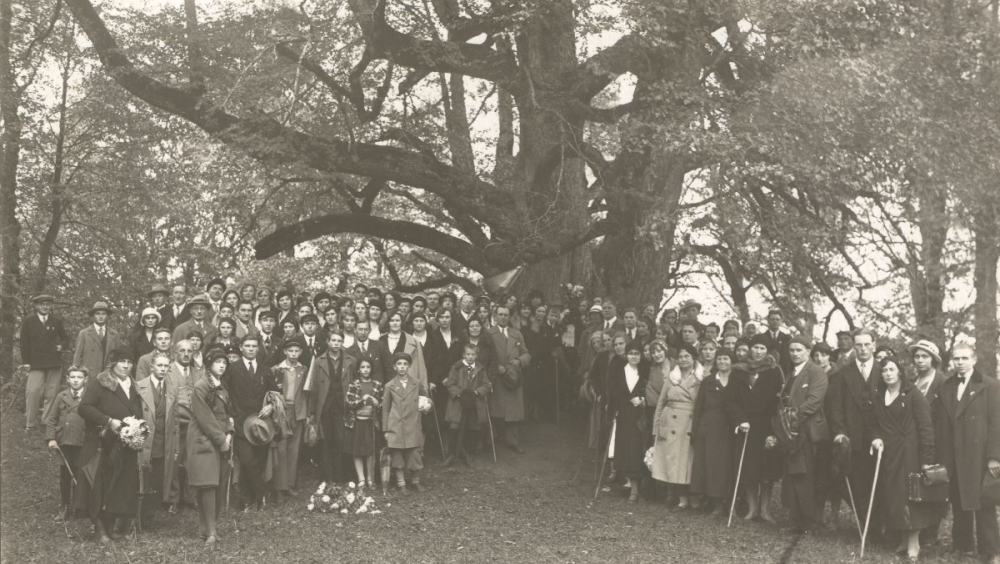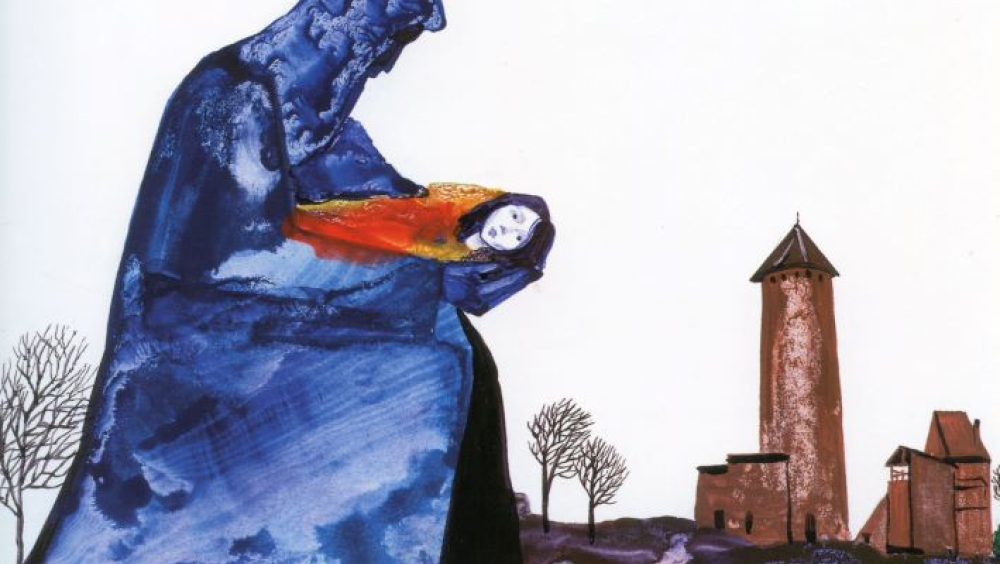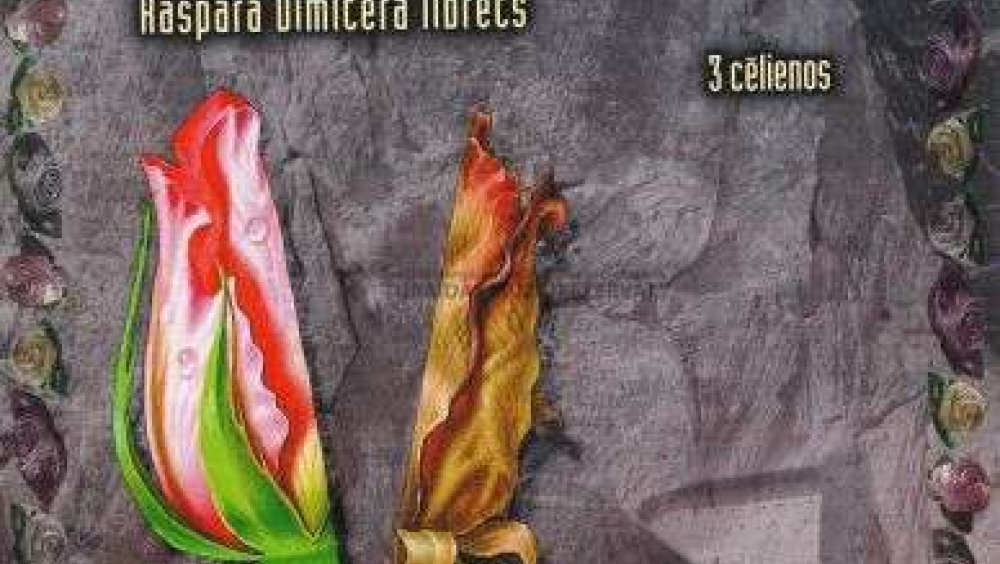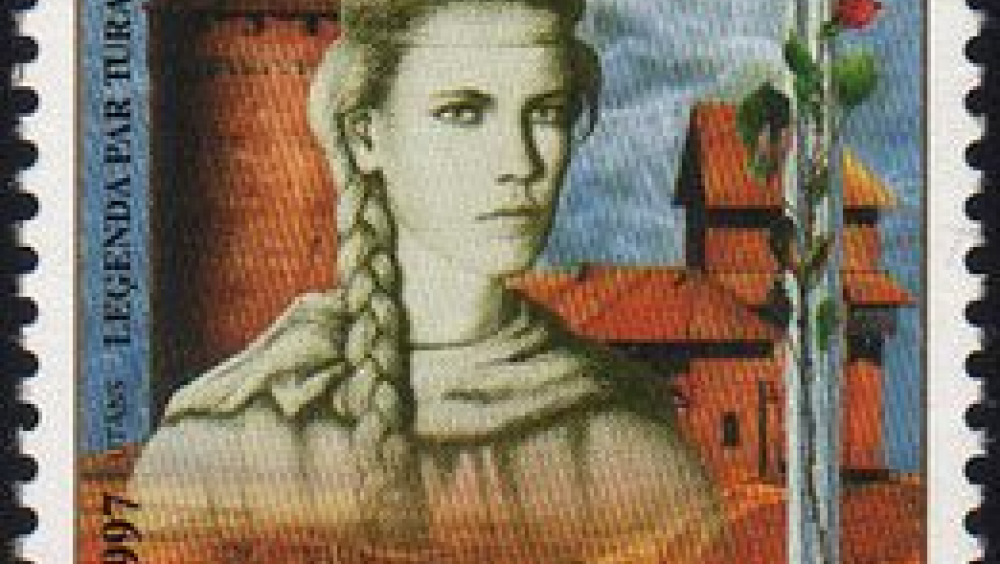With Love Against War. About the hot hell and a piece of the Kingdom of Heaven
The Turaida Museum Reserve tells the story of history over the course of the past millennium. This year marks the 810th anniversary of the construction of the Turaida Stone Castle. The Turaida Castle is linked to the most beautiful love legend in Latvia. The legend that has survived for centuries is kept alive and passed on to future generations as a spiritual and moral heritage. Hundreds of newlyweds visit the memorial on their wedding day, paying tribute to the age-old and unchanging values of love, loyalty and honour, keeping alive the belief that everyone has the opportunity to rise to heroism.
The story of the virgin Maija Greif - the Rose of Turaida is closely linked to the environment in which the events of the ancient past took place - the memorial is located on the edge of an ancient cemetery where local inhabitants were buried from the 13th century until 1772. In the early 20th century, a burial site was marked by an old linden tree on the edge of the former cemetery, and a plaque with the inscription "Še dus Turaidas Roze" (“Here lies the Rose of Turaida”) was affixed to it in 1922. People's stories mention that there used to be a marble cross with the inscription "Love is stronger than death, and honour above all" next to the branchy linden tree with a dense foliage. In later years, the interaction between people and the place has continued - it has been repeatedly landscaped, becoming a sacred place in people's consciousness. A folklorized retelling of the legend says that Victor, the gardener at Sigulda Castle, planted a white rose on his beloved's grave, which turned red from Maija's blood. Roses, as a symbol of beauty and perfection, are still planted on the Church Hill today, and the Rose Festival is traditionally celebrated every year on the Day dedicated to Maija.
Art is one of the ways in which the legend lives on today - in literature, theatre, cinema, painting, sculpture, ballet, opera, pop music and other genres. In 1927, Rainis, the Latvian philosopher, poet and playwright, based on the legend of the Rose of Turaida, wrote the tragedy "Mīla stiprāka par nāvi" (“Love is Stronger than Death”), further increasing the power and popularity of the legend and ensuring that the Church Hill becomes a significant tourist destination.
At the end of the year, light installation performances are planned at Turaida Castle, where ancient legends - including the story of the Rose of Turaida - will be brought to life with the help of magic of light and artistic images.
The project aims to involve young people of the county in the activities. Under the guidance of professional artists, young people will gain new knowledge about intangible heritage and promote the story about the Rose of Turaida - how the power of love conquered death.
The Legend about Maija – the Rose of Turaida
Through the centuries - plague, wars and fires - the story of Maija the girl from Turaida has been preserved in people's memory. The legend is based on true events that took place in the surroundings of Turaida more than 400 years ago. During the reconstruction of the Riga Castle cellars, old documents were found under the rubble - the archives of the Vidzeme Court. In 1848, Magnus von Wolffeldt, assessor of the Vidzeme Castle Court, published a 3-volume thick book on Baltic punishment cases, and in this collection he included an Act on the Murder in the Turaida Castle district. The events, long considered legend, have been confirmed in writing.
A brief description of the period in which the events took place: in the late 16th and early 17th centuries, a devastating war called the Polish-Swedish War (1600-1629) took place in Vidzeme. The battles also took place near Turaida. The armies of both countries repeatedly overran the Turaida region and the war damage was enormous. During this time, people's belief in miracles and magic was very high. Women's social status was subordinated to men's - they were under guardianship - marriage required the consent of parents or guardians.
In the spring of 1601, the Swedish troops captured the Turaida Castle and started a feast there - nobody seemed to care about the dead and seriously wounded on the battlefield, only the old scribe of the Turaida Castle, Greif, went alone at night into the blood-soaked valley to see if anybody needed help. On a clear moonlit night, the old man heard someone crying among the fallen fighters - there laid a beautiful lady, dead, with one arm around a slain knight and the other around a small, crying child. Old Greif took the orphan home and committed to raising her as a foster child. Since this happened in May, the Greif had named the little girl Maija. Years passed and Maija grew up to be a beautiful virgin - because of her beauty and virtue, people called Maija - the Rose of Turaida.
In those times, young craftsmen travelled around the world - a young man, Victor Heil, from Germany, arrived in Livonia and was apprenticed to the Sigulda Castle lord as a gardener's apprentice. Soon he met Maija, the Rose of Turaida, and love sparked in the hearts of both young people. Greif has given the necessary consent for the marriage. In the evenings, the two young people met halfway between Sigulda and Turaida Castles - in Gutman’s Cave. The wedding was planned for August 1620.
At that time, two deserters of the Polish army - mercenaries Adam Jakubovsky and Peter Skudritz – were at military service in the Turaida Castle. Jakubovsky saw Maija and fell passionately in love with her, but the girl rejected his advances. This infuriated Jakubovsky and he decided to take Maija by force, devising a diabolical plan - he wrote a note (supposedly from Victor) and lured Maija to his usual meeting place in Gutman’s Cave. Maija came and realised that she had been tricked and deceived. She was wearing a red silk scarf around her neck, given to her by her fiancé, Victor Heil. She told Jakubovsky that the scarf has magical powers, protects the wearer from the strokes of sword, and asked him to test it. At that time, people believed in magic charms. Jakubovsky, filled with superstition and greed, believed the story about the magic scarf - at first he hesitated, but then he struck with a sword with all his might and the girl fell lifeless at his feet. Maija decided better to die than to be dishonoured. Jakubowsky was frightened, ran into the forest and hung himself by the strap of his sword.
In the evening Victor Heil found Maija murdered in Gutman’s Cave and desperately rushed to the Turaida Castle for help, meanwhile people found gardener's axe of Victor near the cave, so the judge decided that Victor Heil was the murderer. The trial took place at Turaida Castle – it was intended to sentence Victor Hejl for murder.
The course of events was changed by the mercenary Peter Skudritz, who came to court and told the truth. Victor was acquitted, but Maija was buried on the Turaida's Church Hill with the inscription on the cross "Love is stronger than death". Late in the autumn of the same year, Victor Heil returned to his homeland Germany, taking with him a handful of sand from the grave of his bride – the Rose of Turaida.
If we can empathise with the story, we might be better able to understand today’s world as well.
The story about the Rose of Turaida is an important part of Europe's intangible cultural heritage - it is an inheritance from the past and a reflection of human values.
The events take place at the beginning of the 17th century, during the Polish-Swedish War. The theme of the war is connected with many aspects - it is a story about soldiers and local inhabitants, about killing and subjugation, about the causes and consequences of war, good and evil, life and death, courage and a woman's right to make her own choices.
The value of woman's life and honour was high according to the customary law of the Baltic peoples of the 14th-17th centuries - the highest punishment for killing and raping a woman was hanging or beheading - so not only a woman's life but also her honour was highly valued in times of peace.
Stories about a virgin who chooses death rather than dishonour can also be found elsewhere in Europe, especially in Scandinavia, such as the story of Hagbard and Signy. We can look into the lives and souls of people at that time, and try to get closer to their understanding of truth, justice and honour. People's demands were simple but high - so high that often, like the Rose of Turaida, they did not spare their lives - only death could bring understanding and reconciliation.
The concept of "war crime" is a creation of Western civilisation, rooted in humanistic principles and universal human values. However humanity and civilisation have evolved, the notion that it is permissible to achieve justice by force is still alive and well today. Values must be viable not only in a peaceful and stable society, but also at a time when war is raging in the heart of Europe and millions of people have to make choices every day.
Being aware of its spiritual and moral heritage, the European Union is founded on indivisible and universal values: human dignity, equality, the rule of law and human rights. The right to life, freedom of conscience and freedom of choice are fundamental human rights that no one can take away. Gender-based violence is unacceptable and punishable. This is our common European identity - a network and a connection - a source of understanding, unity and creativity - ideals and principles shaped by the experience of development and past conflicts.




